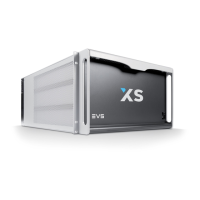EN 55022 European Emission Standard
EN 61000-4-5 European European Electromagnetic Compatibility (EMC) Part
4 (Limits), Section 5; Testing and measurement
techniques - Surge immunity test.
EN 61000-4-6 European European Electromagnetic Compatibility (EMC) Part
4 (Limits); Section 6 ; Testing and measurement
techniques - Immunity to conducted disturbances,
induced by radio-frequency fields.
EN 61000-4-7 European European Electromagnetic Compatibility (EMC) Part
4 (Limits), Section 7; harmonics and interharmonics
measurements and instrumentation, for power supply
systems and equipment connected thereto.
EN 61000-4-11 European European Electromagnetic Compatibility (EMC) Part
4 (Limits); Section 11 ; Voltage dips, short
interruptions and voltage variations immunity tests.
EN 50082-1 European European Generic Immunity Standard – Part 1:
Domestic, commercial and light industry
environment.
FCC USA Conducted and radiated emission limits for a Class A
digital device, pursuant to the Code of Federal
Regulations (CFR) Title 47 –
Telecommunications, Part 15: Radio Frequency
devices, subpart B-Unintentional Radiators.
1.5.3 EMC WARNING
Changes or modifications not expressly approved by the manufacturer for
compliance could void the user's authority to operate the equipment. This
equipment has been tested and found to comply with the limits for a Class B
digital device, pursuant to Part 15 of the FCC Rules. These limits are designed to
provide reasonable protection against harmful interference in a residential
installation. This equipment generates uses and can radiate radio frequency
energy and, if not installed and used in accordance with the instructions, may
cause harmful interference to radio communications. However, there is no
guarantee that interference will not occur in a particular installation. If this
equipment does cause harmful interference to radio or television reception, which
can be determined by turning the equipment off and on, the user is encouraged to
try to correct the interference by one or more of the following measures:
• Reorient or relocate the receiving antenna
• Increase the separation between the equipment and receiver
• Connect the equipment into an outlet on a circuit different from that to which the
receiver is connected
• Consult the dealer or an experienced radio/TV technician for help

